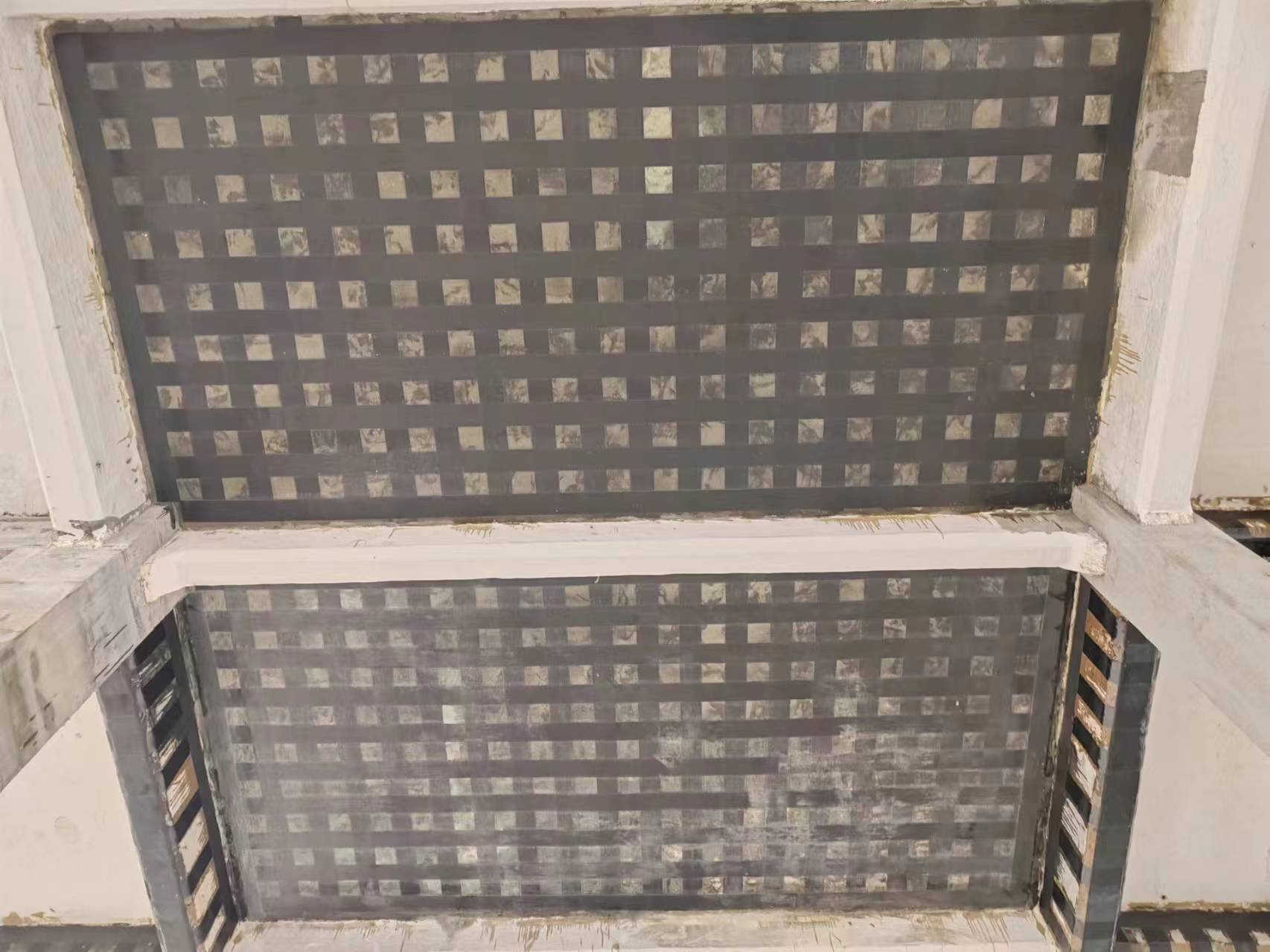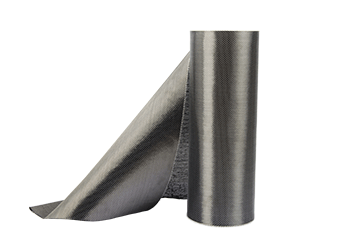Solutions
Horse Construction offers full range of structural strengthening materials with technical supports, documentation supports, products supports, project supports.
Carbon Fibre-Reinforced Polymer (CFRP)
As a professional who has been deeply engaged in the field of structural strengthening for a long time, I have witnessed the rise and application of numerous new materials, and Carbon Fibre-Reinforced Polymer (CFRP) is undoubtedly one of the brightest stars among them.

CFRP is mainly composed of two core elements, carbon fibres and a polymer matrix, which are combined in an elaborate manner. Carbon fibres can be regarded as the backbone of CFRP. They are mostly carefully fabricated from polyacrylonitrile (PAN) precursors or pitch-based materials. During the production process, these raw materials need to undergo a series of rigorous and complicated heat treatment procedures, just like a precise alignment ceremony at the atomic level. With the tempering of high temperature, carbon atoms are gradually arranged in an orderly manner, and finally form fibre strands that are thin in diameter but possess astonishing strength. They are like fine and tough steel cables, endowing the material as a whole with extraordinary tensile properties and becoming the key pillars for carrying huge loads.
The polymer matrix, which is commonly epoxy resin, acts like a universal adhesive and an all-round protector. On the one hand, with its excellent bonding properties, it firmly anchors individual carbon fibres together, building a stable and unified overall structure, ensuring that stress can be smoothly transferred among the fibres without any obstruction. On the other hand, it serves as an impenetrable shield, isolating carbon fibres from the insidious erosion of moisture and the malicious attacks of chemical substances in the outside world, enabling CFRP to maintain stable performance in complex and changeable environments. Moreover, it can skillfully distribute the externally applied stress evenly to every fibre tissue, avoiding structural hazards caused by excessive stress concentration.
The manufacturing of CFRP is like an art creation with meticulous craftsmanship, and each step is full of technology and ingenuity. In the fibre production stage, starting from PAN precursors or pitch-based materials, they are first placed in a high-temperature furnace. They undergo a profound transformation during the carbonization process, where impurities dissipate like light smoke and carbon atoms aggregate closely. Then, the graphitization process follows immediately, further optimizing the atomic arrangement and making the crystal structure of carbon fibres approach perfection, with the strength and modulus soaring, thus laying a solid foundation for the subsequent missions.
The impregnation process is like a deep integration dance between fibres and resin. Under the precise control of the process, the viscous polymer resin infiltrates into every microscopic pore of the carbon fibre bundles until each fibre is gently wrapped by the resin and reaches a saturated impregnated state. Only in this way can it be ensured that the finished product exhibits uniform mechanical properties at the macroscopic level and prevent the occurrence of weak links.
The final curing stage is similar to a miraculous chemical solidification feast. The impregnated fibre materials are slowly sent into a precisely temperature-controlled thermal environment. Heat, like a catalyst, activates the polymerization reaction of resin molecules. The originally flowing resin gradually cross-links and hardens, closely intertwining with carbon fibres to form a rigid, high-performance CFRP plate, profile or customized component, ready to be dispatched to various structural strengthening battlefields at any time.

In the broad realm of strengthening existing building structures, CFRP plays a significant role. Facing bridges that have endured the vicissitudes of time and whose load-bearing capacity is gradually declining, we carefully apply CFRP plates to the damaged beams and piers. Through professional bonding techniques, CFRP is closely attached to the concrete surface, just like endowing weak bones with a tough outer layer, greatly enhancing their load-bearing capacity and enabling them to once again bear the continuous flow of traffic. For old building frames, CFRP can specifically strengthen key nodes and load-bearing components, effectively delaying structural aging and preserving precious memories for the city.
When it comes to flexural strengthening, CFRP is even more proficient. In the repair of beam and slab structures, according to mechanical principles, CFRP materials are precisely laid on the bottom of the beam, just like adding a powerful spring to it to resist bending stress. Or it can be wrapped around the edges of the slab to comprehensively suppress the deformation trend and ingeniously improve the flexural stiffness of the structure, allowing the building space to expand freely under the guarantee of safety.
In terms of column wrapping, CFRP has become a powerful assistant in seismic strengthening. In areas where earthquakes occur frequently, the columns of buildings are a vital line of defense. Wrapping the columns with flexible CFRP sheets layer by layer to form a tight restraining hoop not only significantly enhances the axial compressive bearing capacity but also restrains the cracking and spalling of concrete at the moment of earthquake wave impact, safeguarding the life passage.
In the field of crack repair, CFRP demonstrates its microscopic protective magic. Once tiny cracks appear on the surface of concrete structures, it is like a breeding ground for hidden dangers. At this time, special CFRP patches are precisely applied to cover the crack areas. With its excellent bonding strength and high-strength characteristics, it is just like a fine adhesive bandage closing the wound, preventing the cracks from further expanding and protecting the internal steel bars of the structure from corrosion threats, ensuring that the overall durability remains as solid as a rock.
And in the front line where corrosive environments are rampant, such as coastal buildings facing the howling sea breeze and industrial plants filled with chemical fumes, CFRP's anti-corrosion talent is brought into full play. Without the need for additional protective coatings, its stable chemical structure is sufficient to resist the erosion of salt, acid and alkali, maintaining the stable mechanical properties of the structure for a long time and greatly reducing maintenance costs and frequencies, thus becoming a long-term strengthening solution that allows people to rest easy.
All in all, Carbon Fibre-Reinforced Polymer (CFRP) dominates the world of structural strengthening. With its unique advantages, it is rewriting the rules of building safety and lifespan. As a structural strengthening expert, armed with CFRP as a powerful tool, I am full of confidence to meet the challenges of rejuvenating every endangered structure and continue to strive for building a stable and durable man-made environment.
You can find anything here you are in need of, have a trust trying on these products, you will find the big difference after that.

High strength, unidirectional carbon fiber wrap pre-saturated to form a carbon fiber reinforced polymer (CFRP) wrap used to strengthen structural concrete elements.

High strength, unidirectional carbon fiber fabric pre-saturated to form a carbon fiber reinforced polymer (CFRP) fabric used to strengthen structural concrete elements.

High strength, unidirectional carbon fiber sheet pre-saturated to form a carbon fiber reinforced polymer (CFRP) sheet used to strengthen structural concrete elements.